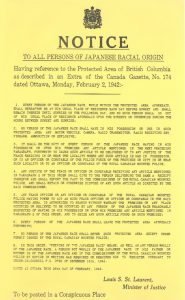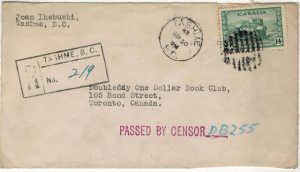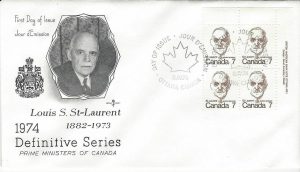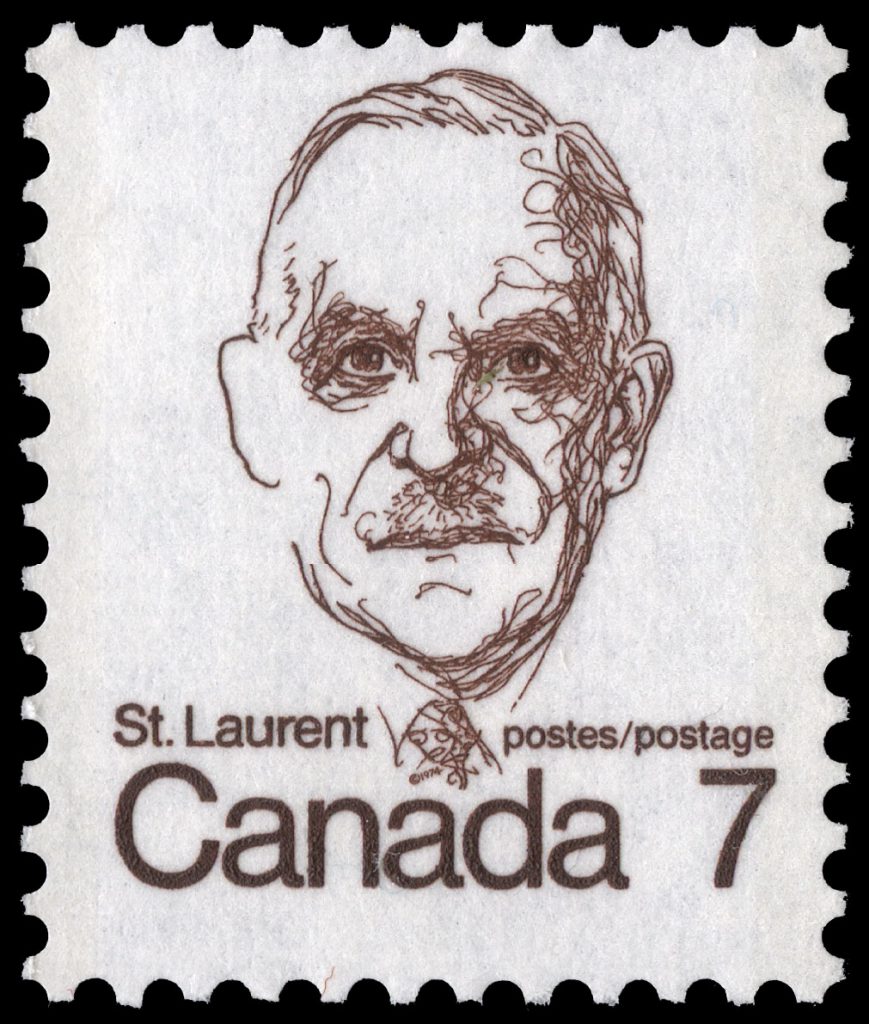On today’s date in 1942, Canadian justice minister Louis St. Laurent released the now-infamous “notice to all persons of Japanese racial origin,” subjecting Japanese Canadians to government-enforced interrogations, curfews and internment.
Three years earlier, on Sept. 3, 1939 – when St. Laurent was still working as a lawyer – the Canadian government invoked the Defence of Canada Regulations, a set of emergency measures implemented under the War Measures Act.
A week later, Canada entered the Second World War.
The invocation of the Defence of Canada Regulations allowed then justice minister Ernest Lapointe to detain without charge anyone who might act “in any manner prejudicial to the public safety or the safety of the state.”

On Feb. 26, 1942, St. Laurent issued a notice as Canada’s justice minister to Japanese Canadians. (Photo by McGill University Archives)
When the Pacific War began in December 1941, discrimination against Japanese Canadians increased.
After the attack on Pearl Harbor on Dec. 7, 1941, Japanese Canadians were categorized as enemy aliens under the War Measures Act.
Starting Dec. 8, 1941, 1,200 Japanese-Canadian-owned fishing vessels were impounded as a defence measure, and the feds banned shortwave radios and controlled the sale of gasoline and dynamite.
On Jan. 14, 1942, the feds passed an order calling for the removal of male Japanese nationals aged 18-45 from a designated protected area of 100 miles inland from the British Columbia coast.
Japanese nationals removed from the coast after Jan. 14 were sent to road camps around Jasper, Alta.
By fall, many of the relocated Japanese Canadians were allowed to join their families at internment camps in the isolated British Columbia interior. These include Tashme, Greenwood, Sandon, Slocan, New Denver and Kaslo.
Altogether, more than 21,000 Japanese Canadians were forcefully relocated to road camps, internment camps, prisons, beet farms and less restrictive “self-supporting projects” during the Second World War.
“Military necessity” was used as a justification despite opposition from senior members of Canada’s military and the Royal Canadian Mounted Police, which argued Japanese Canadians posed no threat to security.
As the war came to an end, the feds decided to remove all Japanese Canadians from British Columbia. They were forced to choose between deportation to Japan or moving east of the Rockies i

A cover mailed from the Tashme Internment Camp in April 1943 is addressed to a book club in Toronto. The Tashme camp was located 14 miles from Hope, B.C., and housed 2,300 Japanese Canadians from 1942-45. (Photo by Andrew Liptak, also known as ‘Philcovex’ on his Postal History Corner blog)
mmediately. The deportations eventually stopped due to public protest, but 4,000 Japanese Canadians left the country after the war.
On April 1, 1949, the last of the wartime restrictions were lifted, allowing Japanese Canadians to travel freely and return to the west coast.
In September 1988, the Government of Canada formally apologized in the House of Commons and offered compensation for the wrongful incarceration, seizure of property and disenfranchisement of Japanese Canadians. Surviving internees received $21,000 each, and any deported Japanese Canadians had their Canadian citizenship reinstated.
The compensation package also awarded $12 million to the National Association of Japanese Canadians to promote human rights and community building.
A $24 million endowment fund was also created to establish the Canadian Race Relations Foundation with the goal of eliminating racism.

A first-day cover produced by Rosecraft for the 1974 St. Laurent issue features a corner block of four serviced with two Ottawa cancels. (Photo by ‘sherbrooke101’ via eBay)
1974 ST. LAURENT STAMP
On April 8, 1974, Canada’s Post Office Department (now Canada Post) issued a seven-cent definitive stamp (Scott #592) depicting St. Laurent as part of its Caricature series.
St. Laurent served as Canada’s prime minister from November 1948 to June 1957.
His law career “was a distinguished one,” according to a press release from the Post Office Department when the St. Laurent stamp was issued in 1974.
“Brilliant and capable, he gained the respect of his colleagues and served two terms (1930-32) as President of the Canadian Bar Association. It was St. Laurent’s profound sense of duty to his country which drew him out of private life and into politics in 1941.”
Following the war, St. Laurent moved to international politics. In 1946, he was appointed Secretary of State for External Affairs.
“A strong supporter of the newly founded United Nations, he led the Canadian delegation to the first sessions of the General Assembly in London and New York. He was also very active in the formation of the North Atlantic Treaty Organization.”
He rose to the helm of the Liberal party in August 1948 and three months later was elected as the country’s 12th prime minster.
“His chief objectives were clear: to strengthen national unity and to widen Canada’s role in international affairs. Under the leadership of St. Laurent, the original plans for the Union of British North America were finally fulfilled.”
Newfoundland entered into Confederation in 1949, under St. Laurent’s watch, as the 10th Canadian province. His government also finalized the changes in the British North America Act.
“During the St. Laurent years, Canada enjoyed unprecedented prosperity and industrial growth. The St. Lawrence Seaway, the Trans-Canada Highway and the Trans-Canada Pipeline were among the many development projects of his government.”
St. Laurent later died in July 1973. He was 91.
A year later, a stamp featuring the late prime minister was issued. It’s engraved by Yves Baril and designed by David Annesley, who worked on the entire Caricature series.

